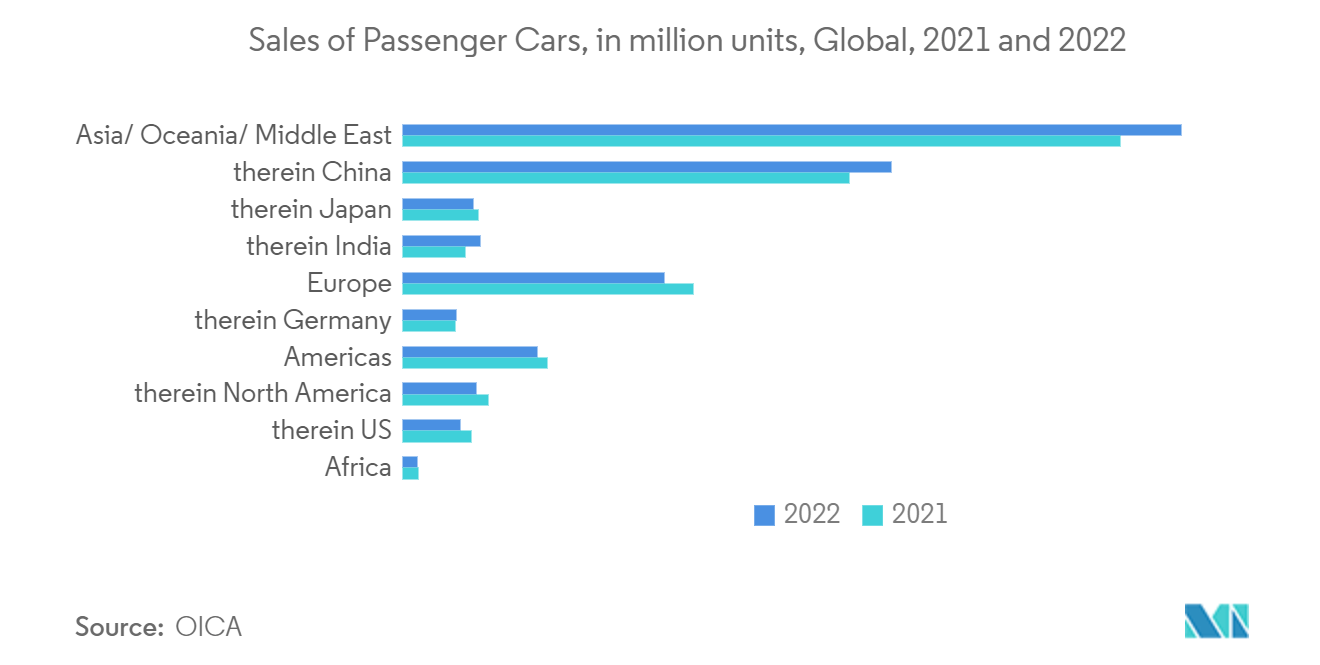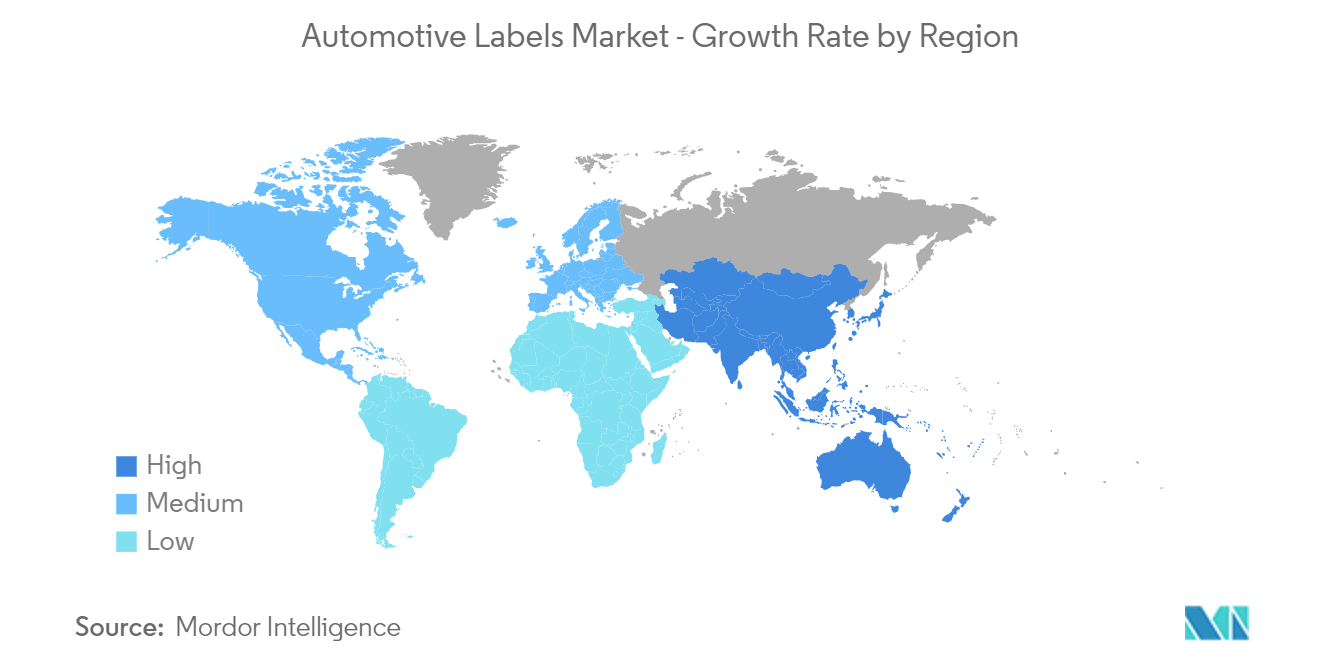Market Trends of Automotive Labels Industry
Barcode Segment to Hold Major Market Share
- Barcode labels provide a fast way to store and retrieve data. Barcode labels contain company and product details in line and number formats. Barcode labels can also be used to manage inventory and reduce the recall burden by providing traceability. Automotive barcodes on automotive labels can be found on parts of engines, doors, dashboards, and more.
- The 2D barcode is one of the most common types of barcode used to label car parts. Labeling plays a critical role in the supply chain of a car part manufacturer. It guarantees a product's accurate delivery, provides important barcodes and other information, and accelerates the movement of goods; from customer-specific needs and branding requirements for distributors in emerging markets to import and export controls and customs audits, labeling can be labor-intensive and expensive.
- On the other hand, 3D scanners generate a 3D scan of the bar code. This scan can be read from any direction. 3D barcode scanners are commonly used in industrial applications such as automotive assembly and manufacturing.
- Several manufacturers provide a wide range of automotive barcode labels. For instance, Metalcraft, Inc. manufactures plastic barcode labels that come in various applications. They can be used on windshields, cables, wires, dashboards, etc. Also, there are tamper-evident and metalized labels, many others.
- Car parts and automotive inventory labeling are important in producing cars and car parts. Car manufacturers use barcodes to keep track of products in their warehouses and to check inventory from their third-party logistics (3PL) suppliers. They also use barcodes (with printed barcodes) to identify parts with a wide range of other information, including serial numbers, dates, and models.
- Barcode printers or scanners can print these barcodes to produce the label applied to a product. This helps track inventory and minimizes the risk of mistakes or missing important information. According to OICA, the sales of light vehicles are expected to increase by 4.73% this year. Overall, the growing automotive industry is expected to aid the market's growth.

Asia-Pacific Expected to Dominate the Market
- The Asia-Pacific region holds a major market share and is expected to witness the highest growth over the forecast period. The growing number of startups in the region by companies like Avery Dennison to grow the labels and packaging industry and boost its innovation abilities is a significant factor aiding the market's growth.
- The automotive after-sales market's growth is attributed to various factors, including increased vehicle production and sales in China and the expansion of the automotive components industry. Additionally, the market for engine after-sales is projected to experience a robust growth rate over the forecast period, driven by an increase in customer-centric customization and the market for used cars. Within the after-sales segment, labels are utilized to replace parts, provide maintenance and repair services, ensure safety, and adhere to regulations. As the market continues to expand, there is likely to be a corresponding increase in the demand for engine and other automotive labels.
- As the Indian automotive industry plays a major role in both macroeconomic expansion and technological development, it has been an excellent indicator of how well the economy is doing. Due to the growing middle class and a large proportion of India's young population, the two-wheeler segment dominates the market in terms of volume. The sector's growth is also supported by increased interest by businesses to explore regional markets. This has resulted in an increase in the production of vehicles. As the automotive industry continues to grow, the demand for automotive parts, including labels, is also expected to increase.
- The Japanese government recognizes radio-frequency identification (RFID) as an innovative technology supported by major financial investment to ensure that the strong production base in Japan will play a leading role in RFID applications over the coming years. Significant advances in RFID technology can be achieved based on government support. This could lead to more advanced and effective RFID, which would be better suited for use in the automotive sector.
- According to the Japan Automobile Manufacturers Association Inc., in 2022, Japanese automakers manufactured around 16.96 million vehicles at production facilities outside of Japan, increasing from 16.46 million in the previous year. Expanding production outside Japan indicates a global expansion strategy by Japanese automakers. As they establish a stronger presence in foreign markets, they may require specialized labels to cater to the unique requirements of different regions and languages, further driving demand in the automotive labels market.

